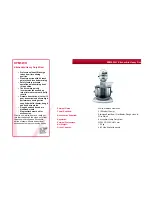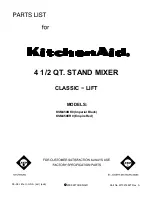
27
12. GLOSSARY OF TERMS
Balance
Relative levels of left/right in a stereo pair, usually controlled by a panoramic potentiometer (panpot).
Channel
Input section of a mixer
Clip, Clipping
Overload, severe distortion.
Cue
Headphone or stage foldback feed. Permits listening to an already recorded
track, for example, in order
to realize when you have to play or sing.
dB (decibel)
A unit of measurement, ratio of two voltages (dB = 20 log (V1 / V2), (dBu = voltage ratio relative to 0.775
V RMS).
Dl (Direct Injection)
The connection of an instrument directly to the mixer via a Dl Box, converting the high level unbalanced
signal (from the instrument) into a low level balanced signal (for the mixer).
Dry Signal
A signal with no effects.
Effects (abbr. FX or EFX)
Devices that alter the original ( "dry" ) sound or add something to it, e.g. Delay, Echo, Reverb etc.
Equalizing
The use of filters for cutting or boosting selected frequencies.
Fader
Linear potentiometer with logarithmic response
Feedback (howiround)
Unstable circuit (e.g. mic/speaker, input/output) where a signal is able to return to an input from an output,
causing repeating cycles of progressively higher gain.
FOH
Front of Hall.
FX (or EFX)
Effects (see above).
Gain
Degree of amplification.
Headroom
Signal range between nominal level and clipping.
High Pass Filter
Cuts off low frequencies. The cut-off point can be variable as is the case in the H.P. Filter of the ETEK
AD 1823.
Howlround
see Feedback.
Line level signals
Signals that come from a low impedance source (from -10 to + 6dBu).



































